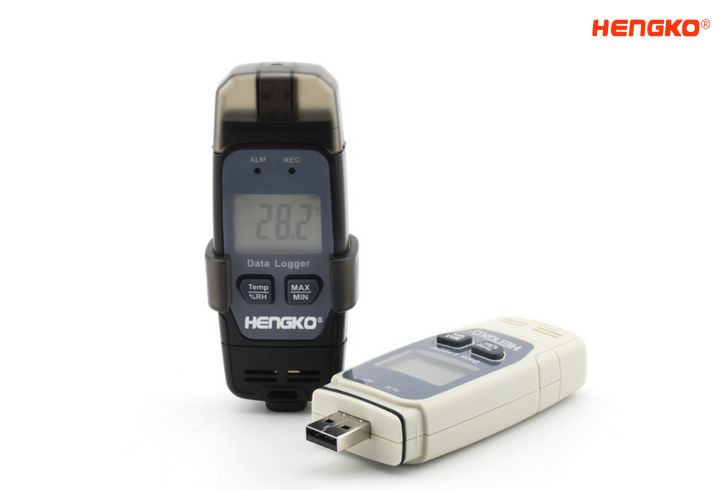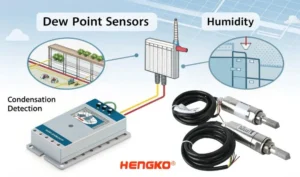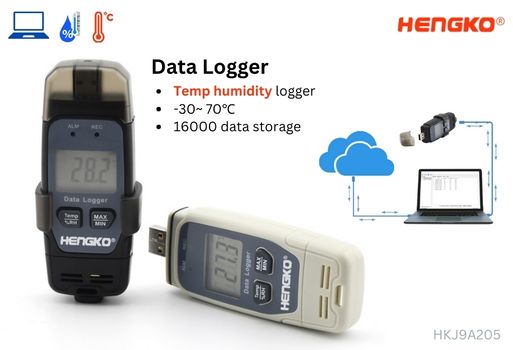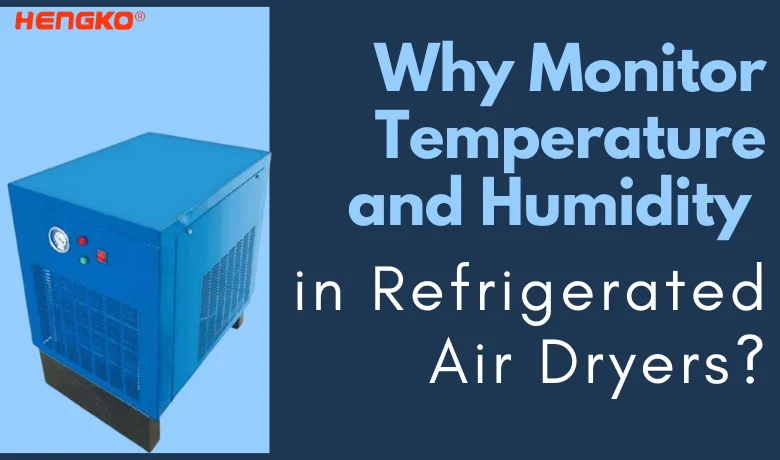Why One Office Zone is Too Humid & How a Humidity Transmitter Fixes It ?
Why One Office Zone is Too Humid & How a Humidity Transmitter Fixes It Persistent
Advanced Monitoring Solutions: Expert Manufacturing and Bulk Supply of Industrial Temperature and Humidity Data Loggers
Αρχική σελίδα " Temperature and Humidity Data Logger
HENGKO’s commitment to supplying superior-quality industrial USB temperature and humidity data loggers, tailor-made for effective monitoring applications.
Focused on delivering the best in class, these data loggers are designed to meet the rigorous demands of various industrial environments. With a USB interface, they offer ease of connectivity and data transfer, making them user-friendly for diverse applications.
HENGKO is a leading professional manufacturer, specializes in USB Temperature and Humidity Data Loggers. These devices are meticulously engineered to offer precise and reliable monitoring of environmental conditions.
Our data loggers are distinguished by their USB connectivity, which facilitates easy data transfer and analysis. Designed for versatility, they are ideal for a wide range of applications, including scientific research, food storage, and climate control in various environments.
We commitment to quality and innovation and positions it at the forefront of the industry, these making HENGKO’s products a top choice for professionals seeking accurate and user-friendly temperature and humidity monitoring solutions.
You can choose different item based on temperature test range and data storage
Θα λάβετε πολύ χαμηλότερη και ανταγωνιστική τιμή λόγω του εξαιρετικά οικονομικού ελέγχου μας.
Θα ανταποκρίνεστε πάντα στις διαρκώς μεταβαλλόμενες ανάγκες της αγοράς με τα προϊόντα μας που αναβαθμίζονται συνεχώς.
Θα λάβετε ισχυρή υποστήριξη μάρκετινγκ για να σας βοηθήσει να πουλήσετε τα προϊόντα με επιτυχία, οι υλικές υποστηρίξεις περιλαμβάνουν: εικόνες προϊόντων υψηλής ανάλυσης, δροσερά βίντεο με 3d εφέ και πολλά άλλα.









Selecting the Ideal USB Temperature and Humidity Data Logger: A Guide to Making the Right Choice
A temperature and humidity data logger is a device that records temperature and humidity measurements over time. It typically consists of a sensor, a data storage unit, and a battery. The sensor measures the temperature and humidity of the surrounding environment, and the data storage unit records these measurements at regular intervals. The battery powers the device.
Temperature and humidity data loggers are used in a variety of applications, including:
There are many different types of temperature and humidity data loggers available, with a variety of features and capabilities. Some of the most common features include:
Mini USB temperature and humidity data loggers are compact and portable devices that record temperature and humidity measurements over time. They are often used in various applications such as:
Here are some of the main features of mini USB temperature and humidity data loggers:
here are the different types of temperature and humidity data loggers:
I hope this helps! Let me know if you have any other questions.
USB temperature and humidity data loggers are small, portable devices that record temperature and humidity levels over time.
They are used in a variety of applications, including:
Data loggers can be used to monitor temperature and humidity levels in greenhouses,
warehouses, and other controlled environments. This data can be used to ensure that the environment is optimal for the
plants, products, or people in the space.
Data loggers can be used to track the temperature of food during transport and storage.
This helps to ensure that food is kept at a safe temperature and does not spoil.
Data loggers can be used to monitor the performance of heating, ventilation,
and air conditioning (HVAC) systems. This data can be used to identify and troubleshoot problems
with the system.
Data loggers can be used to collect data for research purposes. For example, they can be
used to study the effects of climate change on temperature and humidity levels.
There are many benefits to using USB temperature and humidity data loggers. Some of the benefits include:
If you are looking for a way to monitor temperature and humidity levels, a USB data logger is a great option. They are accurate, convenient, and cost-effective, and they can be used in a variety of applications.
Here’s a comparison of USB and normal temperature and humidity data loggers:

The best type of data logger for you will depend on your specific needs and priorities. Consider the following factors:
| Χαρακτηριστικό γνώρισμα | USB Data Logger | Normal Data Logger |
|---|---|---|
| Interface | USB | Display/Software |
| Power | Battery/USB | Battery |
| Portability | Small & lightweight | Varies |
| Ευκολία χρήσης | User-friendly | May require setup |
| Data storage | Περιορισμένη | Larger |
| Κόστος | More expensive | Less expensive |
I hope this will be helpful for your business or project to choose !
Ενημερώστε με αν έχετε άλλες ερωτήσεις.
μερικές ερωτήσεις σχετικά με το σημείο δρόσου και τον πομπό και τον αισθητήρα που εσείς και οι άνθρωποι θέλετε να μάθετε
A temperature and humidity data logger is a compact electronic device that continuously records temperature and humidity
levels over a set period of time. They are often used in various applications where monitoring these environmental
factors is crucial, such as:
In greenhouses, warehouses, and other controlled environments, data loggers help ensure optimal conditions for plants, products, or people.
Tracking the temperature of food during transport and storage to prevent spoilage.
Identifying and troubleshooting issues with heating, ventilation, and air conditioning systems.
Collecting data on temperature and humidity for various research purposes, like studying the effects of climate change.
So, temperature and humidity data loggers are valuable tools for various applications where precise monitoring of these environmental factors is essential.
They offer accuracy, convenience, and valuable data insights for informed decision-making.
I hope this explanation, along with the images, provides a good understanding of
what temperature and humidity data loggers are and how they work.
Let me know if you have any other questions!
A data logger is an electronic device that automatically records and stores data over time.
It’s designed to measure and capture various physical parameters or events, providing a continuous log of
information for analysis and decision-making. Here’s a breakdown of its key functions:
While both a data logger and a thermometer measure temperature, they have several key differences in their functionality and purpose:
In summary, a data logger offers long-term, automated data collection and analysis for detailed insights over time,
while a thermometer provides real-time, single-point measurements for immediate information access.
Choose the instrument that best suits your specific needs and data requirements.
I hope this clarifies the differences between these two temperature and humidity monitor tools!
While the terms “data logger” and “data recorder” are often used interchangeably, there are some subtle differences between them. Here’s a breakdown:
Data Logger:
Data Recorder:
Here’s an analogy:
Choosing between a data logger and a data recorder depends on your specific needs:
I hope this clarifies the differences! Let me know if you have any other questions.
Επικοινωνήστε με την HENGKO σήμερα για οποιεσδήποτε ερωτήσεις σχετικά με τον αισθητήρα θερμοκρασίας και υγρασίας, τον πομπό και τη λύση
Why One Office Zone is Too Humid & How a Humidity Transmitter Fixes It Persistent

Introduction Compressed air is often referred to as the “fourth utility” in modern industry, alongside

1. Introduction The semiconductor industry operates under some of the most stringent environmental conditions of

Introduction In the world of environmental simulation and reliability testing, constant temperature and humidity chambers

Are you grappling with how dew point sensors impact industrial efficiency? These sensors play a
Επικοινωνήστε με την ομάδα εμπειρογνωμόνων μας για εξατομικευμένη βοήθεια και θα σας προσφέρουμε άμεσα τις καλύτερες λύσεις για πομπούς και αισθητήρες θερμοκρασίας και υγρασίας, προσαρμοσμένες στις συγκεκριμένες ανάγκες σας.

Let us tell you why you should choose a dew point transmitter
from HENGKO
Η απάντηση είναι απλή: Η HENGKO είναι διαφορετική.
Why One Office Zone is Too Humid & How a Humidity Transmitter Fixes It Persistent humidity in one office zone can disrupt comfort, increase mold
Why One Office Zone is Too Humid & How a

Introduction Compressed air is often referred to as the “fourth

1. Introduction The semiconductor industry operates under some of the
WhatsApp μας